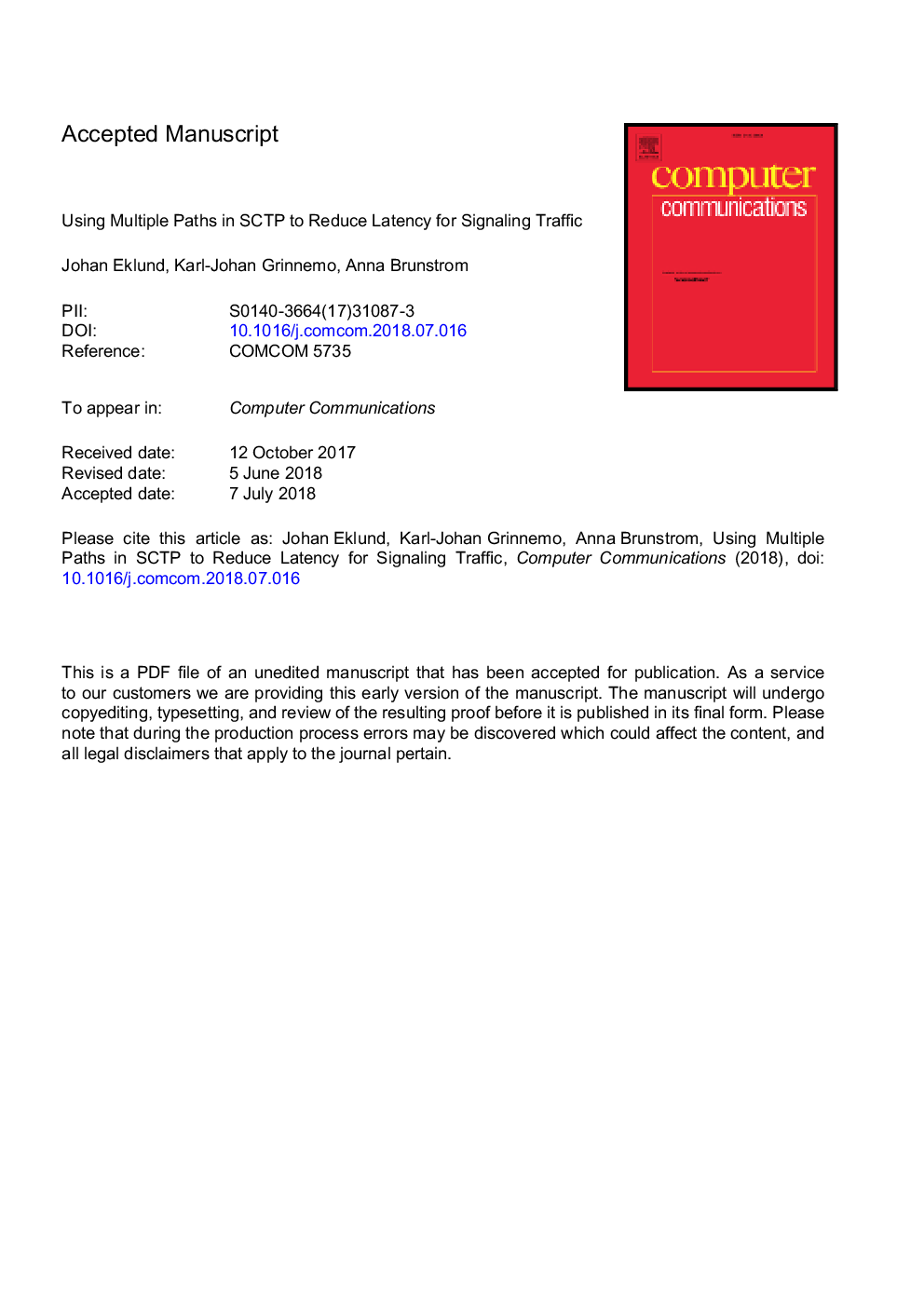| کد مقاله | کد نشریه | سال انتشار | مقاله انگلیسی | نسخه تمام متن |
|---|---|---|---|---|
| 11002527 | 1443292 | 2018 | 19 صفحه PDF | دانلود رایگان |
عنوان انگلیسی مقاله ISI
Using multiple paths in SCTP to reduce latency for signaling traffic
دانلود مقاله + سفارش ترجمه
دانلود مقاله ISI انگلیسی
رایگان برای ایرانیان
موضوعات مرتبط
مهندسی و علوم پایه
مهندسی کامپیوتر
شبکه های کامپیوتری و ارتباطات
پیش نمایش صفحه اول مقاله

چکیده انگلیسی
The increase in traffic volumes as well as the heterogeneity in network infrastructure in the upcoming 5G cellular networks will lead to a dramatic increase in volumes of control traffic, i.e., signaling traffic, in the networks. Moreover, the increasing number of low-power devices with an on-off behavior to save energy will generate extra control traffic. These increased traffic volumes for signaling traffic, often generated as bursts of messages, will challenge the signaling application timing requirements on transmission. One of the major transport protocols deployed for signaling traffic in cellular networks is the Stream Control Transmission Protocol (SCTP), with support for multiple paths as well as for independent data flows. This paper evaluates transmission over several paths in SCTP to keep the latency low despite increasing traffic volumes. We explore different transmission strategies and find that concurrent multipath transfer over several paths will significantly reduce latency for transmission over network paths with the same or similar delay. Still, over heterogeneous paths, careful, continuous sender scheduling is crucial to keep latency low. To this end, we design and evaluate a sender scheduler that considers path characteristics as well as queuing status and data flows of different priority to make scheduling decisions. Our results indicate that by careful dynamic sender scheduling, concurrent multipath transfer could lead to reduced latency for signaling traffic irrespective of path or traffic characteristics.
ناشر
Database: Elsevier - ScienceDirect (ساینس دایرکت)
Journal: Computer Communications - Volume 129, September 2018, Pages 184-196
Journal: Computer Communications - Volume 129, September 2018, Pages 184-196
نویسندگان
Johan Eklund, Karl-Johan Grinnemo, Anna Brunstrom,